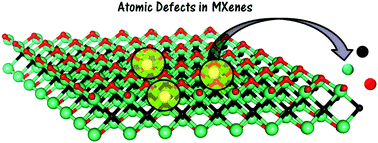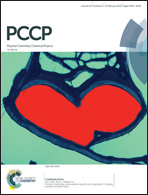Effects of point defects on the magnetoelectronic structures of MXenes from first principles†
Abstract
“MXene”, a new class of two dimensional materials, has attracted considerable research interest due to its unusual chemical bonding pattern as well as promising technological applications. Like other 2D materials, very recently, these classes of materials were also found to be prone to structural defects, thus altering the electronic and transport properties of the host. Using extensive first-principles based simulations, we investigated the structural and magnetoelectronic (i.e., magnetic and electronic) behaviour of the most probable point defects in these MXene systems, such as single vacancies and Schottky type double vacancies. Defect formation energies appeared to be strongly dependent upon local chemical bonding and the nature of reconstruction. Moreover, this layered material exhibited prominent metal to semiconductor or semiconductor to metal transition depending upon the type of the system or the defect. Moreover, a few of the defective MXenes become magnetic in nature due to the presence of unpaired electrons in the spin split d-orbitals. Thus, it is evident that intrinsic point defects in MXene can emerge as a potential tool to modulate the properties of 2D layered MXenes towards promising device applications.



 Please wait while we load your content...
Please wait while we load your content...